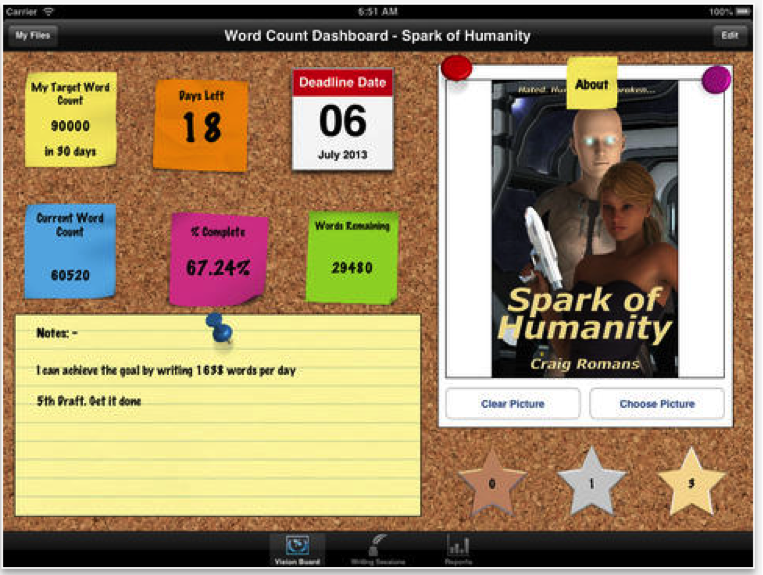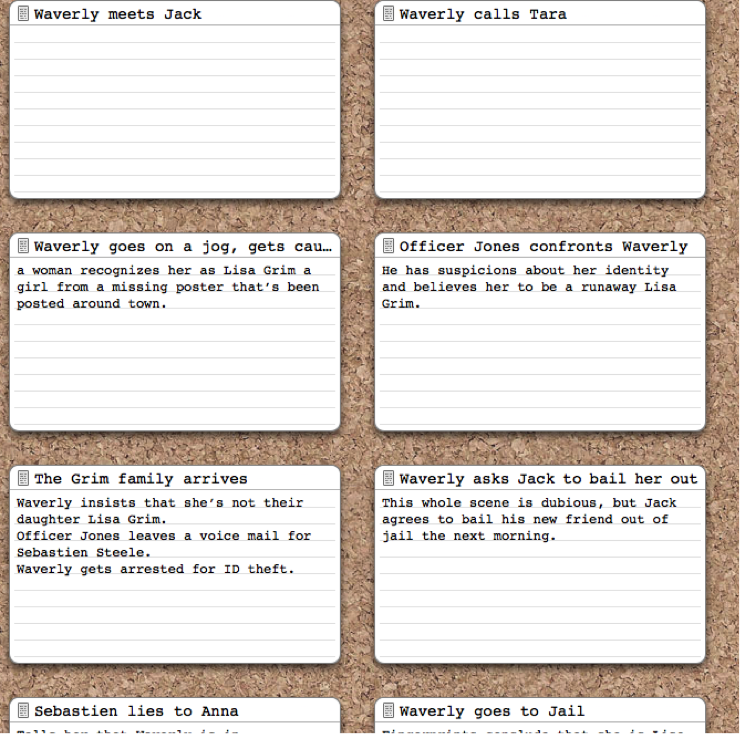Do you have an awesome idea for a novel? I bet you do. How long have you been holding on to your idea? A few months? A few years?
That long, huh?
You’re not alone. A lot of writers sit on great novel ideas for years but are too intimidated to get started. You might be facing a procrastination problem, or you might just not know where to start.
Writing a novel, all 70,000 words plus of one, can be a daunting task indeed. Even though it sounds intimidating, when it comes to novels, 70,000 words isn’t that long. When it’s all typed up and bound in a beautiful cover, the resulting book is only about two inches thick. A lot of novels can actually hit 80-90,000 words or more. (Check out these colossal word counts of epic fantasy novels!)
To get to 70k, however, you need to start with word one. This post offers some actionable tips and ideas to help you finally getting off your butt and start writing your novel. Ready to learn how to start a novel? Let’s go.
To Outline or Not to Outline? That Is the Question
There is no right or wrong answer to this question, but I’ll tell you some advice from my experience authoring six published books and drafting several more.
I always start with a brief outline. I don’t put a lot of detail into it (unless it’s non-fiction, but that’s a topic for another post) because I know, as I get into the writing process, that details are going to change. I’m not the only author who has discovered that characters will have their “own ideas” about what should happen as you go along.
For me, the purpose of an outline is to help avoid the absolutely terrifying stare of the blank page. Being at word zero of 70k+ is scary.
An outline is easy to construct, and it provides some footing for you to get started.
So what should an outline look like? Basically, it can be as simple as a rough sketch of your main ideas. For example, let’s say I’m writing a novel about a girl from Kansas who happens upon a magical land somewhere over the rainbow (yes, I’m totally plagiarizing The Wizard of Oz here—nice catch, genius.)
My rough novel outline might look something like this:
- Dorothy in Kansas
- Dorothy gets swept up in tornado
- Dorothy isn’t in Kansas anymore
- Dorothy meets a witch
- Dorothy sets out on her journey to find her way back home
- Etc. etc.—you get the idea
The point is that your initial outline should cover the broad strokes of your concept. You don’t want to waste a lot of time outlining because, as you get deeper into the story, it will change. You will find new elements and plot twists that will surprise you.
 For example, maybe it wasn’t in the original outline that Dorothy would end up finding three traveling companions and that one would be stuffed with straw. As the story evolves, a rough outline allows for its organic development.
For example, maybe it wasn’t in the original outline that Dorothy would end up finding three traveling companions and that one would be stuffed with straw. As the story evolves, a rough outline allows for its organic development.
Don’t spend a lot of time on your outline, maybe a couple days or a week at most. Once you have some bare bones laid out, it’s time to dig in to drafting.
Write with Abandon
When writing the first draft of your novel, your best friend is “abandon.” What do I mean?
I mean write without a second thought for what you are putting down on your page. Don’t self-edit as you go; you can fix problems later. Much later. For now, your goal should only be to dive in and write as many words as humanly possible that are even loosely related to your core idea.
The amazing thing about this method is that you will come up with characters and plot twists that you might have never before imagined. Allow your story to carry you away like the swift current of a raging river. Let go, and don’t try to swim to shore. You’ll be delighted to discover the amazing places the current will take you.
The first novel I ever attempted to write didn’t get past chapter five because, every time I opened the manuscript, I spent all of my time revising and perfecting chapters one, two, and three. By the time I was happy with my changes there, I no longer had the minutes left in the day to start working on chapter four. The result was a beautiful first few chapters followed by a sparse next few and an eventual loss of interest in finishing the project.
It wasn’t until I learned the art of writing with abandon that I was able to write the entirety of a first-draft novel.
An Idea Is Just a Seed
An idea does not a novel make. Of course you are always going to start with an idea, but treat your idea like a seed. Just like when you plant a seed, water it, and help it grow, so, too, are you going to develop characters, themes, and plot elements to make that teeny, tiny idea expand into a full-grown novel.
I remember one idea for a novel I drafted came from a dream. The dream was awesome and thought provoking, but when I wrote it out, it only spanned about 5,000 words. This meant I was about 65,000 words short of a novel.
That’s a long way off!
How did I handle it? I found threads in the initial 5,000 words to follow and wrote with abandon to find out where they would take me. Eventually, I developed a complete manuscript full of plot twists, themes, and character development—something no single dream could have ever accomplished.
Try to Finish Your First Draft Quickly
It’s important to finish your first draft within a reasonable amount of time. What is reasonable? Three months for a 70,000 word draft is very reasonable.
Writers who participate in NaNoWriMo are actually encouraged to write 50,000 words in a single month. (It’s hard! I’ve done it.)
The best way to finish your draft in three months or less is to write a little bit each day. If you are human, you are likely working a full-time job, have a family, and live a busy life. You want to carve out some sacred writing time. This could be the first hour after you wake up every morning, or perhaps it’s during your 45-minute train commute to work. The point is, write every day, and don’t let up until your draft is finished.
The reason you need to tackle your draft every single day is that your mood and perspectives change over time. You may not be able to pick up where you left off if you let a draft sit unfinished too long.
One of the best ways to finish a draft quickly is to set reasonable daily, weekly, and monthly word count goals, and stick to them.
Here’s how:
Divide 70,000 words into reasonable chunks, and tackle them over a dedicated period of time. For example, you might commit to writing 1,000 words per day or 6,000 words per week. At this rate, you’ll have a draft in just over two months.
One awesome way to keep track of your word count commitment is to download an app like Word Count Dashboard for Apple.
Apps like this make it easy to keep track of your progress and motivate you to stay on target.
Speaking of awesome apps that help writers stay organized and on target, I highly recommend using the Scrivener app. If you use Scrivener, it has a handy word counter, too.
Use Scrivener and Write Like a Pro
When I write blogs, I use MS Word or Google Docs, but when I write a full-length book, I use Scrivener.
Novel writing has a lot of organizational considerations that just aren’t relevant to smaller bits of writing, and Scrivener covers these nicely.
Scrivener is set up so that you can divide your novel into short chunks or scenes and move them around so that they make more sense. This is a lot easier than doing a cut and paste in Word. Here’s an example of how it looks:
Of course, I don’t want you worrying about shifting ANY scenes around until after you have completed your first draft.
In fact, I would recommend just opening your word processor or even an old-fashioned notebook so that you can hack out your first draft with absolutely zero concern for structure or order. (George R.R. Martin apparently uses a DOS computer from the 1980s to draft his masterpieces). Once your draft is ready for some work, use Scrivener to cut, revise, and rearrange your scenes.
Another useful tool in Scrivener (and there are many) is that you can keep character profiles. It encourages you to write in basic information about appearance, background info, and even upload a photo for reference. This is a great way to keep track of who is who for the duration of your project. Here’s a screenshot of a character profile I made for Dorothy:
Keeping track of your character’s appearance, background, and personality will help you create a more engaging and believable story.
How to Start a Novel: Start Writing Now!
I asked Devin Berglund (an author who not only started a novel but finished it, too) for her advice on how to start a novel, and I couldn’t agree with her more.
She says the following:
- Start. Start on your book now. Don’t wait.
- Schedule your writing time, and stay true to it. (I’ve found this one, EXTREMELY helpful and important!)
- Finish the book.
Check out her blog for more info on Devin’s writing process.
When it comes down to it, you can download fancy apps and write outlines, but if you’re not writing, you’re not writing.
So get to it—start writing that novel, and don’t stop until it’s drafted!


